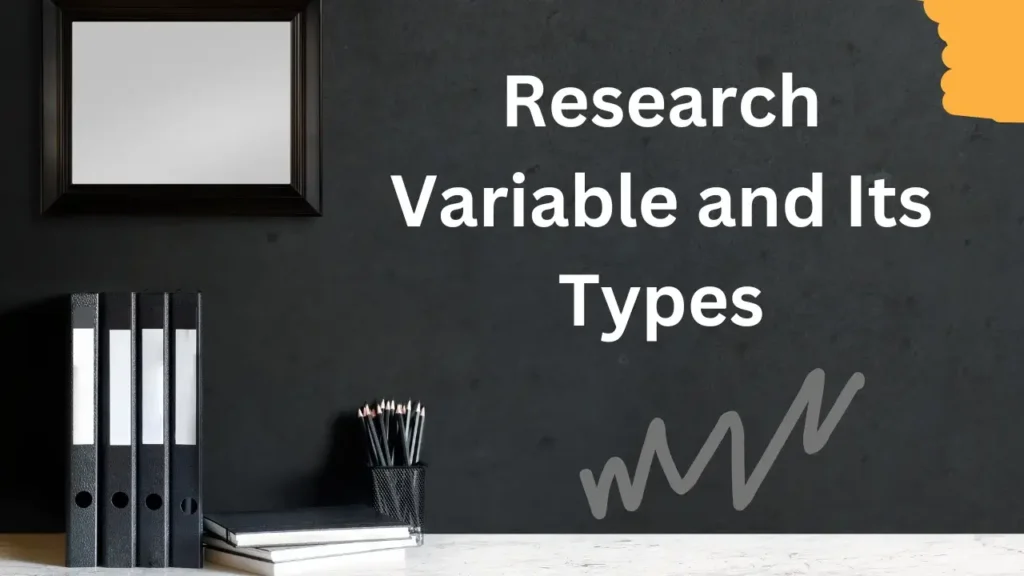A research variable can be defined as;
- The quantity which is subject to change.
- A variable is a phenomenon that may vary from one individual or object to another.
- Anything that has taken differing or varying values.
The examples include income, gender, characteristics, concept, performance, etc. In social science research variables are extracted from the existing research. Some concepts are declared as variables while others as the attributes of variables. These decisions are based on the nature of the topic and the practice of the researcher community.
The concept can take on various quantitative values, such as height, weight, income, and so on. Qualitative variables cannot be measured in a strict or objective manner. However, it is possible to measure the qualitative phenomena by determining the presence or absence of the attribute(s) being studied.
Types of Research Variables
Dependent Variable
A research variable that depends upon other factors that are measured. These variables are likely to be changed due to the experimental manipulation of the independent variable or variables. This refers to the expected impact, result, or changes that occur as a result of introducing an independent variable.
Independent Variable
A research variable that remains consistent and unaffected by the other variables you are attempting to measure. This term describes the state of an experiment that is systematically changed by the researcher. It is believed to be the cause and is expected to be responsible for bringing about changes in a phenomenon or situation.
When changes in one variable are influenced by changes in one or more other variables, it is referred to as a dependent or endogenous variable. The variables that contribute to the changes in the dependent variable are known as the independent explanatory or exogenous variables. For instance, if demand is influenced by price, then demand can be considered a dependent variable, while price is seen as the independent variable.
In addition to their own price, demand is also influenced by other factors, such as income and prices of substitute commodities, as these variables play a role in determining demand. Then, demand is a dependent variable that is influenced by factors such as the price of the product, income levels, and the price of alternative options.

Continuous and Non-continuous Research Variables
Phenomena that assume different values quantitatively even in decimal points or a variable that can take an uncountable set of values or an infinite set of values is known as “continuous variables”. For example, weight, height, length, time, temperature, etc. However, all variables need not be continuous.
Non-continuous also known as discrete variables. Values that can be expressed only in digit values or information that has noticeable gaps between values are called “non-continuous or discrete variables”. These variables are also referred to as ‘discrete variables’ in statistical terms. As an example, age can be measured on a continuous variable, while the number of children is measured on a non-continuous variable.
Active Variables
Certain variables in research studies that aim to prove cause or correlation can be changed, controlled, and managed by the researcher or by another person. In other words, an active variable is a particular type of attributive research variable that a researcher manipulates during an experiment. It’s basically a variable that the investigator has control over to observe its impact on something else. An investigation could examine the impact of different leadership styles on team performance. The active variable would be the leadership approach assigned to different groups. Here’s another example: an experiment could examine the effectiveness of lectures compared to group discussions in promoting student learning. Here, the teaching method used would be the active variable.
Extraneous Variables
It is also called confounding variable. Extraneous variables are those that may not be associated with the objective of the study but still have an impact on the variables. These factors can have an impact on or bring about changes in the dependent variable. These factors, which were not accounted for in the study, could potentially impact the extent or intensity of the relationship between the independent and dependent variables.
For example, let’s say a researcher wants to examine the hypothesis that there is a connection between children’s school performance and their confidence. In this case, confidence would be considered the independent variable, and school performance would be the dependent variable. Intelligence can also have an impact on academic performance in this context. However, as it is not directly relevant to the researcher’s study, it would be considered an extraneous variable.
The impact caused by the extraneous variable(s) on the dependent variable is technically referred to as an ‘experimental error.’ It is important to structure a research study in a way that ensures the dependent variable(s) have a significant impact on the independent variable, as well as any other extraneous variables.
Intervening Variable
Sometimes called the mediating variable, it links the independent and dependent variables. In certain situations, the relationship between an independent and a dependent variable cannot be established without the intervention of another variable. The supposed effect of the cause, or independent, variable can only occur when there is an intervening variable. Intervening variables help to explain why or how there exists a relationship. For instance, income as an intervening variable plays a role in explaining the correlation between education levels (independent) and spending habits (dependent).
Attribute and Demographic Variables
An attribute variable is a characteristic or property of something you’re analyzing, much like a social researcher would consider various aspects of a person’s life. These variables are unable to be manipulated, changed, or controlled. They simply reflect the characteristics of the study population. It can be a person, object, event, or anything else. Some examples include size, color, height, type, or any other measurable feature.

Demographic variable is a specific type of attributive research variable that applies to human populations, providing valuable insights into various aspects of society. Demographics center around quantifiable attributes of a population group, including age, gender, income level, education level, and marital status. These factors have the potential to alter or impact the dependent and independent variables. In short, demographic variables involve the demographic position or status of the respondents.
It’s important to note that while all demographic variables fall under the category of attribute variables, not all attribute variables can be classified as demographic. For example, if you’re examining the growth rate of roses of various colors, “color” would be an attribute variable rather than a demographic variable.
Polytomous Variable
A polytomous variable is an attributive research variable with more than two potential categories. It’s a variable that has different classifications. A variable consisting of multiple categories, such as religion (Hindu, Christian, Muslim), political parties (PTI, PMLN, PPP), level of agreement (Strongly agree, agree, neutral, disagree, strongly disagree), customer satisfaction, social class, marital status, and more.






